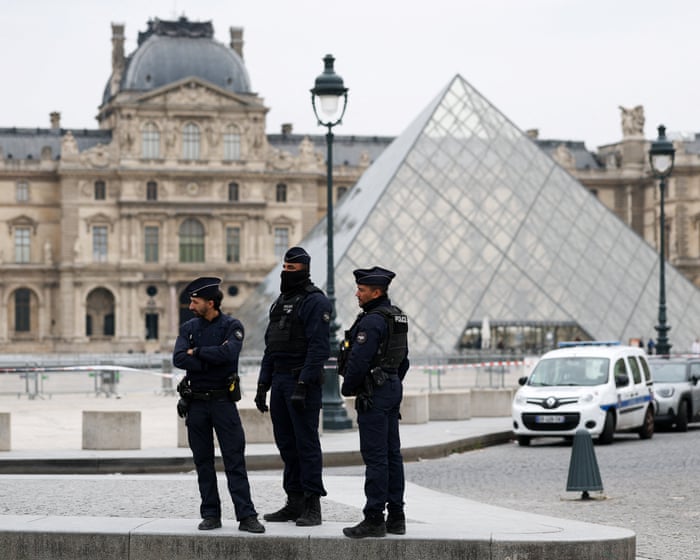In a highly professional heist at the Louvre in Paris, thieves used an angle grinder to break through glass and steal “priceless” historic jewelry from one of the museum’s most ornate rooms. The break-in targeted two glass cases in the Apollon gallery, home to the French crown jewels, prompting the world’s most-visited museum to close suddenly for the day.
French Interior Minister Laurent Nuñez visited the scene and described the stolen jewels as having “unmeasurable heritage value,” calling the raid well-organized. The thieves struck at 9:30 a.m. local time on Sunday and took just seven minutes to escape with the items.
Approaching from an area under construction, the thieves used a truck and a basket lift to access the museum before cutting through windows with an angle grinder. Nuñez attributed the theft to an experienced team that had clearly scouted the location. Three or four suspects fled, and police are investigating whether they belong to a known criminal gang, reviewing security footage for clues.
While Nuñez did not specify which jewels were taken, the Apollon wing houses historic crowns, diadems, and sovereign jewelry. The museum was evacuated to preserve evidence and allow investigators and forensic teams to work. The Paris prosecutor has opened an inquiry.
French Culture Minister Rachida Dati first announced the incident on social media, reporting no injuries and confirming that one stolen piece was recovered outside the museum. A member of her team told Agence France-Presse that at least one person entered the museum but did not comment on the theft.
The Louvre closed for the day for “exceptional reasons” without detailing the stolen items. As one of the largest art centers globally, the Louvre draws over 8 million visitors annually, featuring works from classical sculptures to the Mona Lisa.
Earlier this year, French President Emmanuel Macron announced a major renovation of the museum after its director, Laurence des Cars, highlighted issues like overcrowding, poor insulation, noise, water leaks, and infrastructure problems that risk art conservation and visitor comfort.
Frequently Asked Questions
Of course Here is a list of FAQs about the valuable jewels taken from the Louvre in a heist designed with clear questions and direct answers
General Beginner Questions
1 Did thieves really steal jewels from the Louvre
Yes In a famous 1911 heist the primary item stolen was the Mona Lisa painting not jewels However there have been other thefts and attempted thefts of jewels and artifacts from the museum and its exhibits over the years
2 What was the most famous heist at the Louvre
The most famous was the 1911 theft of the Mona Lisa by Vincenzo Peruggia It was missing for over two years before it was recovered
3 Are the Crown Jewels of France kept at the Louvre
Yes many of the French Crown Jewels including famous diamonds like the Regent and the Sancy are on display in the Apollo Gallery of the Louvre Museum
4 Have any of the Crown Jewels ever been stolen from the Louvre
While there have been attempts and alarms the main French Crown Jewels in the Louvres collection have not been successfully stolen in a major modern heist Their security is extremely high
Advanced Detailed Questions
5 What security measures protect the jewels at the Louvre today
The Louvre uses a multilayered system including bulletproof glass vibration sensors pressure plates infrared beams thousands of cameras and a dedicated team of security personnel and art protection specialists
6 What was the motive behind the famous 1911 Mona Lisa theft
The thief an Italian patriot named Vincenzo Peruggia believed the painting had been stolen by Napoleon and should be returned to Italy He also likely hoped to sell it
7 How do thieves typically try to bypass museum security
Methods can include insider knowledge disabling alarms creating distractions using disguises and exploiting shift changes or maintenance windows Modern thieves may also use cyberattacks on security systems
8 What happens to famous stolen art and jewels Are they ever sold
Its very difficult to sell a worldfamous piece on the open market Often stolen art is used as collateral for other criminal activities held for ransom or kept by the thief as a trophy Recovery is common but it can take years or decades




